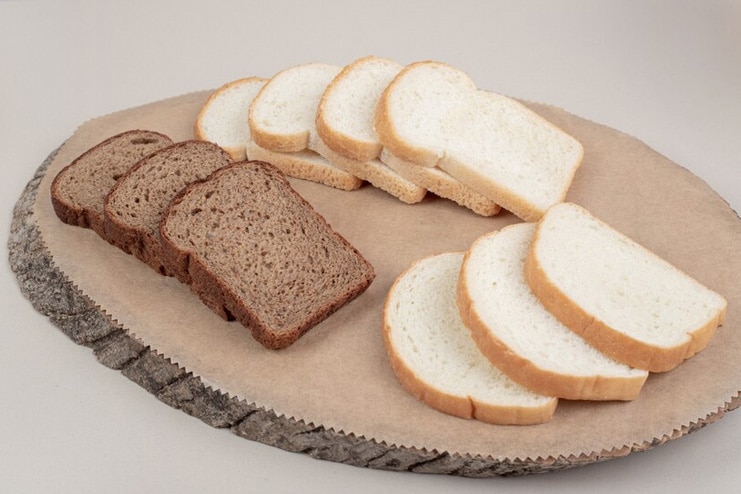Affiliate Disclaimer
Some links in this article are affiliate links. We may earn a small commission if you make a purchase through these links, at no extra cost to you. We only recommend products we find useful to our readersToday’s food industry has numerous products that boast of being “healthy.” However, buyers unknowingly may end up purchasing unhealthy items as there can be false labels and hidden ingredients in the product.
Granola and low-fat, vegan snacks seem to be great choices, but all these healthy-looking foods are full of sugar, bad fats, and highly processed and artificial additives. Understanding the deception and nutritional pitfalls behind these foods is the secret to making healthy choices.
This article will knock down some of the most common myths associated with these “health foods,” show you what to look for and what to avoid, and provide some expert tips to help you shop smarter.
The Deceptive Marketing of Health Foods
In today’s busy world, food manufacturers often use clever marketing tactics to label certain products as “healthy,” creating a false sense of security for consumers. Terms like “low-fat,” “sugar-free,” or “organic” are frequently emphasized on packaging, but they can be misleading.
While these claims sound healthy, they often mask the presence of hidden sugars, artificial sweeteners, or unhealthy additives used to enhance flavor and texture.
For instance, low-fat products may compensate for lost taste by adding sugar, which can lead to blood sugar spikes, weight gain, and other health issues. Understanding the loopholes in food labeling and scrutinizing ingredient lists is essential to avoid falling into the trap of these so-called “healthy” foods.
Also, read: 10 Healthy Foods You Should Not Overeat For Better Well Being
Examples of ‘Healthy’ Foods That Might Not Be Healthy

When navigating the grocery aisles, it’s easy to be swayed by labels that tout foods as “healthy.” However, many products marketed this way can be misleading and may not be as nutritious as they seem. Here are a few examples of seemingly healthy foods that may not be as beneficial as their labels suggest:
- Granola and Granola Bars: Contrary to popular belief, many granolas and granola bars are full of added sugars and calories. The added sugar in these snacks often exceeds the body’s need, hence contributing to higher obesity and heart disease rates. Therefore, one can be healthier by making their own using oats, nuts, and other healthier ingredients.
- Flavored Yogurts: While yogurt, in general, is a healthy option, flavor varieties can include extra and excessive amounts of added sugar. It’s better, therefore, to just opt for unsweetened yogurt and add fresh fruit.
- Protein Drinks and Bars: Although marketed for their high protein content, many protein bars and shakes include unnecessary additives like sugar and artificial ingredients. Most people can meet their protein needs through whole foods, making these products unnecessary for many.
- Sports Drinks and Energy Beverages: Although these drinks are marketed as a necessary hydration and energy drink, they contain loads of sugar and stimulants. They may only be necessary after high-intensity activities, not necessarily for casual action or hydration.
- Gluten-Free Snacks: Being gluten-free does not mean it is healthier. Most gluten-free products lack many nutrients and have high-calorie, sugar, and fat-rich foods, which are not healthy compared to their counterparts with gluten.
How to Identify Truly Healthy Foods

In today’s complex world of food marketing, it can be challenging to figure out what truly qualifies as nutritious. With misleading terms like “natural,” “organic,” or “fat-free” plastered across food packaging, it’s easy to get confused. Here are 10 quick and easy ways to help you identify genuinely healthy foods:
- Read the Ingredient List: Always check the top three ingredients on the label. When sugar or highly refined grains, such as refined wheat flour, head the list, you can guarantee that is not a healthy choice.
- Check the Length of the Ingredient List: A long ingredient list normally indicates processed foods. Try to avoid items with many ingredients you cannot recognize or pronounce.
- Be Mindful of Fats: Not all fats are created equally. Emphasize your diet with healthy fats, such as polyunsaturated and monounsaturated fats, and limit trans fats and saturated fats.
- Seek 100% Whole Grains: When shopping for grains or bread, opt for “100% whole grain” or “100% whole wheat,” as products without this statement typically are a refinement.
- Consider Fresh Over Convenience: Foods prepared with ease, like frozen meals, tend to have less nutritional value. Prepare fresh fruits and vegetables, which take some time but are richer in health benefits.
- Check the Shelf Life: Foods that have a long shelf life have preservatives. Fresh produce that spoils quickly is packed with nutrients.
- Shop the Perimeter of the Grocery Store: Foods with these traits tend to be located on the perimeter of the grocery store. Avoid the center aisles filled with processed foods.
- Eat More Fiber: High-fiber foods are often healthier. Instead of checking calorie content, check the fiber content. This allows you to avoid high sugar, processed carbs.
- Check for Hidden Sugars: Hidden sugar in many foods uses names like corn syrup.
- Question Packaging Claims: Avoid products that claim “all-natural,” which is not regulated. Try to get whole, unprocessed foods like fruits and vegetables as often as you can.
Expert Tips for Smarter Grocery Shopping

Grocery shopping can feel overwhelming with endless choices and the pressure to stay within budget while picking nutritious foods. However, with some expert guidance, the process can become much easier, more cost-effective, and healthier. Here are some smart grocery shopping tips to help you shop like a pro:
- Plan Ahead: First, plan meals for the week. This helps avoid impulse buys and unhealthy choices. Furthermore, you should organize your list according to the supermarket’s layout to make this experience easier. Studies indicate that a list helps in healthy shopping choices.
- Eat Before You Shop: Shopping on an empty stomach tends to increase impulse purchases, mostly junk food. Having a light, well-balanced snack, including protein and fiber, such as an apple with peanut butter or vegetables with hummus, can ward off the need for unnecessary shopping and stick to the list.
- Read Labels Carefully: Not all “natural” or “organic” products are healthy. Be a smart consumer and check labels for even tiny quantities of sugar, fats, and sodium. You should be looking for foods with short lists of ingredients and words you can pronounce. Some free smartphone apps let you scan a barcode and grade your food choice based on its nutritional value
- Consider Canned and Frozen Options: Fresh is best, but frozen and canned versions can be just as healthy and are often less expensive. Choose unsweetened, unsalted, and additive-free options. Frozen fruits and vegetables, in particular, are very good at retaining their nutrients, which makes them a healthy option that fits comfortably into any diet.
- Buy in Bulk: Buying healthy staples in bulk, including whole grains, beans, nuts, and frozen fruits, can save you money. In this regard, focus on items that you use commonly so that you won’t waste any. Many grocery stores and wholesale clubs offer this kind of bulk purchasing version.
- Budget Wisely: Shopping for healthy foods doesn’t have to break the bank to shop for healthy foods. Get the weekly sales or a circular from the store before you go, use generic brands, and get in-season produce. When fruits and vegetables are in season, you can buy more than you need and then freeze them for later.
Nutritional Red Flags to Look Out For

Many are now visiting social media and internet influencers for health and diet tips. Most of the time, however, such information cannot be trusted. Here are some key red flags to look out for when judging nutrition claims:
- Personal Experience as Proof: Someone’s experience can be motivating, personal experience is the key.
- Exclusivity of Advisor: An advisor who fails to consider the budget, lifestyle, and health concerns of the individual is merely deceptive. Dietary counseling cannot be made one size fits all.
- Motives for Profit: Be wary of advice from companies trying to push certain products or services. Such advice may be more geared towards profits and less towards your health.
- No Citing: Good advice is researched. When no sources are cited or cannot be verified by trusted organizations, it’s probably misinformation.
- Only Evidence from One Study: Nutrition science is best based on the conclusion of several studies. Be wary of big claims based on only one study.
- Unqualified Providers: Ensure that the person advising you is qualified enough, such as being a registered dietitian or any other relevant medical expert. An interest in wellness is not enough.
- Elimination of Food Groups: This is never advised, except for the most compelling medical cause. That’s where fad diets come in; they are so absolute with their rules that have no basis and are simply not scientific.
- Sensationalism: The “cure-all” or “toxic foods” sort of claims are highly sensationalized. True experts on health speak the truth in a balanced manner without the use of superlatives.
Conclusion
These expert tips can make grocery shopping easy, save you money, and help you make better food choices. Planning, reading labels, knowing budget-friendly alternatives like frozen produce, and having a well-thought-out list will help you enjoy nutritious food without hassle or overspending. Smarter shopping leads to a healthier lifestyle for you and your family.
References
- https://www.shelleybooth.co.uk/blog/the-misleading-marketing-of-health-foods
- https://www.healthline.com/nutrition/junk-health-foods
- https://mcpress.mayoclinic.org/nutrition-fitness/fact-checking-nutrition-influencers-8-red-flags-to-help-you-spot-nutrition-misinformation/
- https://www.businessinsider.com/food-labels-misleading-words-ingredients-2016-4?IR=T
In this Article


















